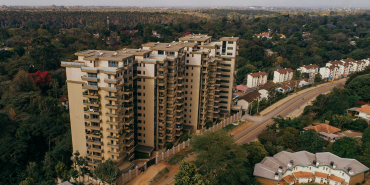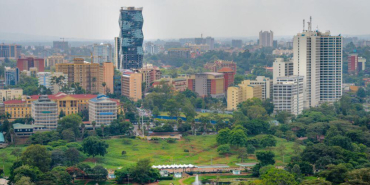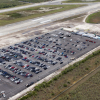Wealthy Buyers Dominate Nairobi Auctions for Repossessed Homes

Nairobi is currently witnessing a stark divergence within its property market, as a surge in auctions reveals a growing chasm between the city’s affluent and middle- to lower-income earners.
While prime real estate in upscale suburbs attracts wealthy investors seeking discounted acquisitions, an overabundance of repossessed properties plagues satellite towns, underscoring Kenya's widening economic inequality. Auctioneers in the capital report a notable increase in demand for repossessed homes and land within exclusive neighbourhoods such as Runda, Karen, Kitisuru, Nyari, and Muthaiga.
This heightened activity indicates a robust appetite for luxury properties despite broader economic pressures impacting other segments of the population. Joseph Gikonyo, proprietor of Garam Investments, a leading auction house in Kenya, confirms the sustained interest in high-end properties.
“These are for monied people and they have no problem buying at such prices,” he says. “All the properties we have attempted to sell in high-end neighbourhoods have seen a lot of interest and most, if not all, have found buyers.”
Data from real estate consultancy HassConsult highlights the premium prices commanded by land in these areas. An acre in Muthaiga is valued at Sh234.6 million, while Lavington commands Sh270.9 million. Nyari and Karen follow at Sh117.9 million and Sh72.3 million respectively, with Kileleshwa topping the list at Sh327.3 million. Properties boasting lavish homes on plots of half an acre or larger are particularly sought after, often fetching between Sh100 million and Sh200 million at auction.
This trend reflects the resilience of Kenya's wealthy elite, who appear insulated from the economic challenges facing the middle class. Although inflation remains contained and the foreign exchange rate stable, the impact of high lending rates, adverse weather conditions, and political unrest—notably the 2024 protests against the Finance Bill—have left many middle-income earners financially vulnerable.
Conversely, satellite towns surrounding Nairobi, including Kitengela, Athi River, Kiserian, Kamulu, and Ongata Rongai, are experiencing a significant downturn. Auctioneers report a growing inventory of repossessed homes and plots in these areas, with limited buyer interest. Garam Investments alone has listed 97 properties valued at over Sh2.65 billion, predominantly located in middle- and lower-income zones.
"The market is flooded," Gikonyo explains. "A lot of people have put up their residential properties for sale due to the hard times. These auction properties are competing with properties repossessed by banks."
The tightening of bank credit has further exacerbated the situation. Commercial lending rates surged last year, making refinancing difficult for borrowers and pushing more into default. According to the Central Bank of Kenya, non-performing loans rose to 17.4 percent in March, up from 11.8 percent five years prior, reaching levels not witnessed in over two decades.
This financial strain has resulted in a noticeable shift in consumer behaviour. Weekend excursions to view plots in satellite towns, once a common activity, have diminished, and speculative buying, previously a hallmark of Kenya’s property boom, is now uncommon.
"We have hundreds of unsold small chunks of land scattered across Kitengela, Kamulu, Kiserian and other towns near Nairobi," Gikonyo laments. "In the past, it never used to be too difficult to auction them off."
HassConsult's second-quarter report corroborates this trend, indicating a sharp decline in demand for land in middle-tier estates such as Ngong, Juja, Thika, and Ongata Rongai. Concurrently, detached houses in high-end areas have experienced the fastest price appreciation in nearly a decade.
Townhouses and villas posted a five percent growth in the quarter, outpacing semi-detached units and apartments, which grew at just 1.3 percent and 1.1 percent respectively. Muthaiga led the price surge with a 3.5 percent increase in home values, followed by Karen (2.5 percent), Runda (2.2 percent), and Nyari (2.1 percent).
“Detached house prices grew at their fastest quarterly pace in nine years,” says Sakina Hassanali, co-CEO and creative director at HassConsult. “Suburbs such as Muthaiga, Karen and Runda—largely exclusive of apartments—reported faster property price growth.”
This dichotomy in the housing market mirrors Kenya's broader economic landscape. While the economy grew by 4.9 percent year-on-year in the first quarter of 2025—driven by gains in agriculture and manufacturing—the benefits appear unevenly distributed. The Treasury projects a modest acceleration to 5.3 percent growth in both 2025 and 2026, attributing this to stable macroeconomic fundamentals.
However, risks persist, including global trade tensions, market volatility, and extreme weather events. For many Kenyans, survival has superseded investment as the foremost concern.
“When the economy starts performing poorly, people tend to put things like buying properties on the back burner,” Gikonyo observes. “It is no longer a priority. The priority is to survive. This hits the auction market.”








Add new comment